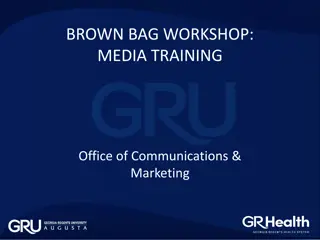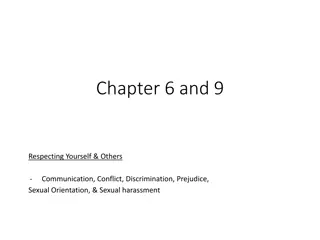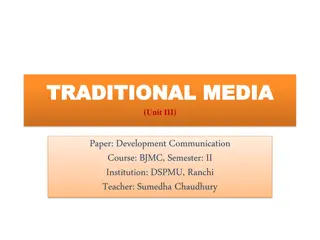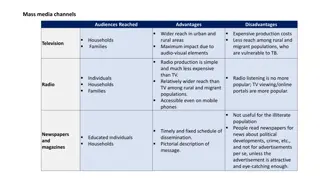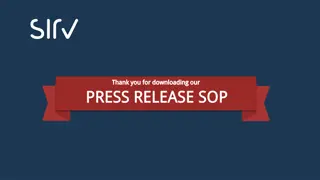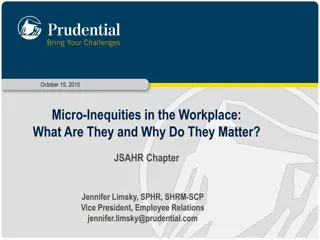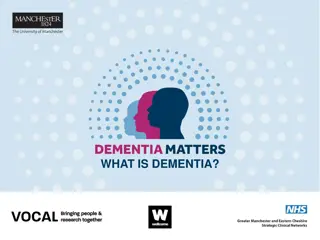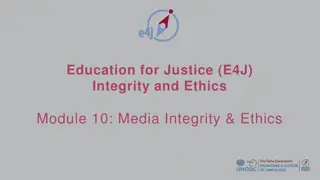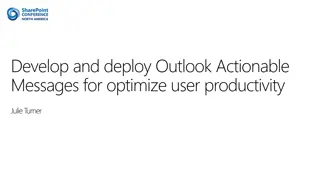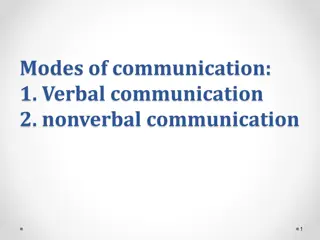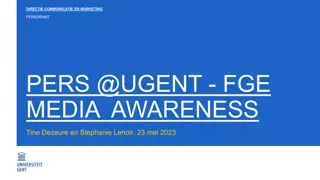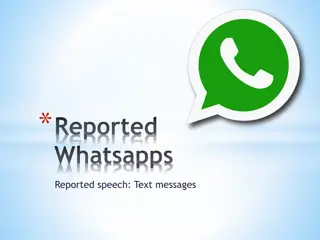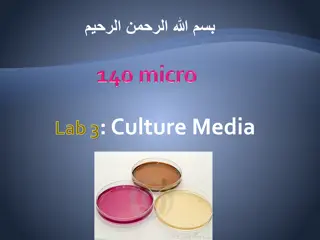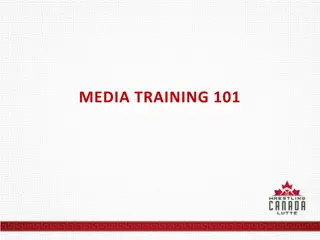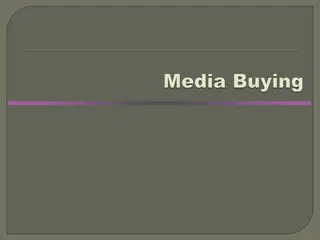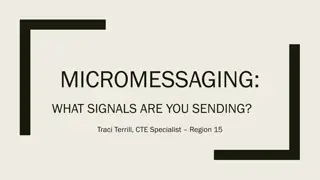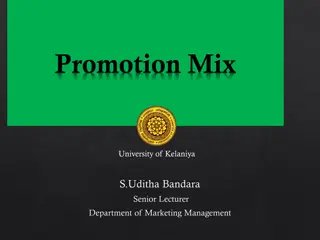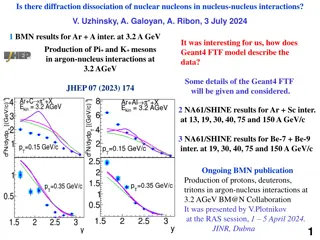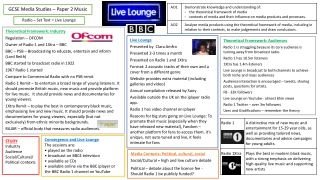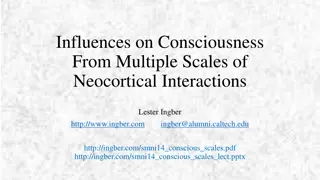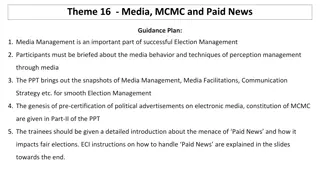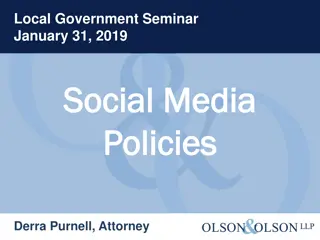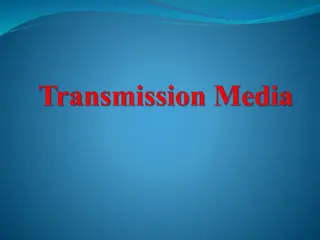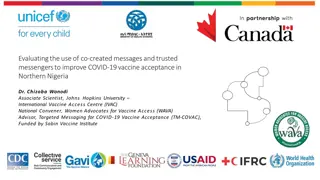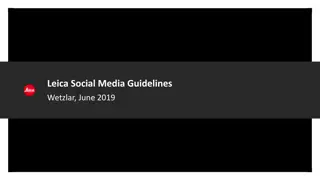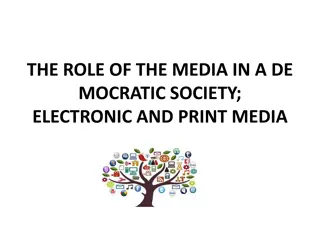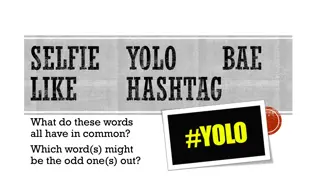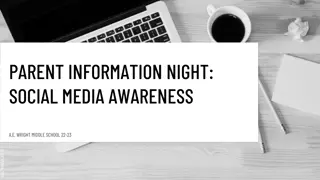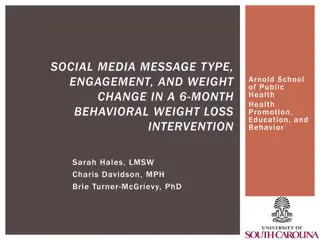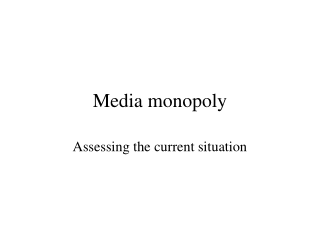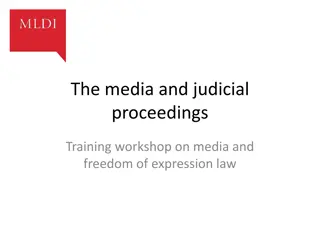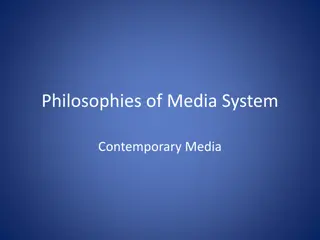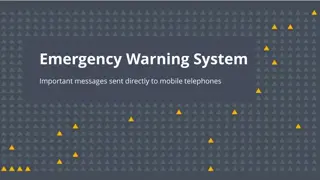Effective Strategies for Media Interactions: Tips, Key Messages, and More
Discover tips for interacting with print and television media, key messages about ACMS, and strategies for reinforcing mission and values. Learn how to handle interviews, turn questions towards key messages, and work effectively with reporters to create compelling news angles.
Download Presentation

Please find below an Image/Link to download the presentation.
The content on the website is provided AS IS for your information and personal use only. It may not be sold, licensed, or shared on other websites without obtaining consent from the author. Download presentation by click this link. If you encounter any issues during the download, it is possible that the publisher has removed the file from their server.
E N D
Presentation Transcript
Media Training and Media Training and Key Messages Key Messages Tools for successful interactions with print and television journalists Brett Kell, MSM ACMS Communications Manager November 15, 2014
What youll learn What you ll learn 1. Tips for interacting with print and television media in interview situations 2. Key messages about the ACMS that can be used to support more specific responses 3. Strategies for ensuring responses use key messages to proactively reinforce the ACMS mission, values and purpose, and that of the specialty as a whole
Why (I hope) youre here Why (I hope) you re here Increase your level of comfort and confidence Learn how reporters work How to handle an interview What you can say when you don t know what to say How to turn any question back toward your key messages Not to learn how to spin or lie
First, a little levity First, a little levity
About reporters About reporters Underpaid, overworked and under enormous pressure Kindness and consideration go a long way Function in minutes and hours, not days or weeks Grateful for responsiveness, follow-through and follow-up Rarely read detailed, technical or dense info Simple pitches or releases that speak in their language are most effective Always seek a news hook/angle
What is news? What is news? Unique. First, largest, only, etc. Timely. Did it just open/start? Celebrate a milestone? Compelling. Is there a human angle or impact? Emotional. Does it evoke laughter, tears or outrage? Odd or unusual. Dog bites man or man bites dog? Visual. Is it beautiful or odd or interesting-looking? Active. Is there movement, particularly for TV?
What is news? What is news?
What isnt news? What isn t news? Conferences Building/office dedications, openings, anniversaries (unless a true milestone, with public impact) Politicians at events (reporters can reach them any time) Grants that are not large, unusual Anything that seems staged or forced
Before an interview Before an interview Be responsive. They re on a deadline. It s an interview, not a conversation. Your role is to convey subject matter expertise and be a resource. Be prepared. What are 3-5 points you want to convey? What don t you want to be asked? Be prepared with answers. Don t be blindsided.
During an interview During an interview Don t use jargon. Presume audience knows nothing about the topic. Use short sentences. You will be edited, so edit yourself first. Stay calm. Despite attitude, ignorance or stupidity, don t get annoyed. Keep the brand on your tongue. Repeat ACMS in your answers if possible. Listen well. Questions may not flow in a logical order; practice your points and how to make them. Don t let your guard down. You re on the record until you re alone. Never say no comment. There s always something you can say.
During an interview During an interview Understand the question. Ask for clarification if you need to. Remember the human element. Illustrate your points with examples. Pick up on cues. If the reporter says I only have/need a few minutes be succinct. Don t repeat negatives, even to deny them. Re-frame the question and bridge to your key messages. Know when the story will run. Knowing and sharing (social media, website, email) positions you as an expert and raises your profile.
Lobbying or legislation issues Lobbying or legislation issues ! Contact the ACMS office immediately Phone (414) 347-1103 or (800) 500-7224 Brett Kell Communications Manager Rebecca Brandt Executive Director Leadership may already know about the issue, and a committee, fellow or staff member may already be working on a response Organizational responses to issues are best coming from the ACMS i.e. New York Times article
ACMS Key Messages ACMS Key Messages Learn these and turn to them whenever possible, in order: 1. Fellowship training 2. Better outcomes 3. Patient-centered 4. Efficiency 5. National reach and engagement 6. Long, rich history
ACMS Key Messages ACMS Key Messages Some examples of how to verbalize key messages: 1. Fellowship training what sets us apart from other dermatologists 2. Outcomes Mohs has an up to 99% cure rate for new and recurrent tumors 3. Patient-centered maximizes healthy tissue and aesthetic result 4. Efficiency we handle removal, pathology and reconstruction 5. National engagement our members serve at the highest levels of 6. Long, rich history the procedure has been used & refined for 70+ years
Frame using skin cancer statistics Frame using skin cancer statistics Most commonly diagnosed cancer in U.S., most cases preventable # of Americans who had skin cancer some time in last 3 decades is estimated to be higher than # for all other cancers combined Incidence rates have continued to increase in recent years Nearly 5 million people treated each year in U.S. for all skin cancers combined, with an annual cost estimated at $8.1 billion 63,000+ new cases of melanoma each year, resulting in nearly 9,000 deaths Annually, about $3.3 billion of skin cancer treatment costs are attributable to melanoma
Fellowship training Fellowship training what sets us apart from other dermatologists While any board-certified dermatologist may perform Mohs surgery, only ACMS members have undergone rigorous fellowship training Chosen through a competitive review and selection process, fellows are required to complete an intensive 1 or 2-year post-residency training program Participation in at least 500 cases under supervision of an experienced, ACMS-approved Mohs surgeon
Fellowship training program Fellowship training program what sets us apart from other dermatologists Fellowship training programs must pass a rigorous application and review process before being allowed to train a fellow All ACMS-approved training programs are re-evaluated every 1 to 5 years to ensure their academic and clinical requirements are being followed and fulfilled.
Outcomes Outcomes Mohs has an up to 99% cure rate for new and recurrent tumors Mohs surgery has the highest cure rate of any skin cancer treatment: 97-99% for primary tumors9, 10 94% for recurrent tumors10 High cure rate leads to fewer recurrences than any other method
Efficiency Efficiency we handle removal, pathology and reconstruction Mohs surgeons often perform removal, pathology and reconstruction Local anesthesia, not general Single outpatient office visit No expensive operating room Usually doesn t require multiple visits or specialists Extremely low recurrence rate ensures patients do not incur costs for additional procedures
Patient Patient- -centered centered maximizes healthy tissue and aesthetic result Because Mohs surgery removes one tissue layer at a time, the procedure preserves the maximum amount of healthy tissue Leaves the smallest surgical defect possible Maximizes the chance of a good aesthetic result
National reach/engagement National reach/engagement our members serve at the highest levels of National organization, national reach, national profile Members featured in numerous medical journals, publications and newspapers, as well as on television and radio programs Members are regularly relied on for information on the effective treatment of skin cancer Members are involved at the highest levels of top dermatological organizations nationwide, including AAD, ASDS, ISDS, etc.
Long, rich history Long, rich history the procedure has been used and refined for 70+ years Mohs surgery is named after founder and originator, Frederic E. Mohs, MD (1910-2002) In June 1936, Dr. Mohs treated his first patient, who had squamous cell cancer of the lower lip Present-day ACMS was founded in 1967 by Dr. Mohs as the American College of Chemosurgery. Over the years, the Mohs surgical process was refined and in 1988, membership changed the name to American College of Mohs Micrographic Surgery and Cutaneous Oncology. This was shortened on the College s 40th anniversary in 2007 to American College of Mohs Surgery (ACMS).
Bridging to Key Bridging to Key M Messages essages No matter what you re asked, you can work your way back to key messages Focus on natural transitions after answering a question: Proactive examples Reactive examples
Bridging to Key Bridging to Key M Messages essages Reactive - DON T: Conjecture. Say It would be inappropriate to speculate on that, but I do know that Say I don t have that information right now, but I can get back to you [offer realistic time frame]. What I can tell you is Choose between unacceptable alternatives. Say Neither of those choices is acceptable or What is important is Speak for/about someone else. Say I can t speak for him/her, but what I can tell you is
Bridging to Key Bridging to Key M Messages essages Proactive - DO: Invitation to share. If you re asked is there anything else you d like to add/share? Say The most important thing to understand/remember here is Say What people should know about Mohs surgery/surgeons is Pregnant pause. Don t ramble, but: Say I m happy to answer any other questions you might have, but it s important to note that The wrap-up. As reporter is winding down/packing up: Say Thanks for reaching out and giving me the opportunity to discuss
Member resources Member resources www.mohscollege.org Practice Marketing materials Media Primer Marketing Manual Journal of Dermatologic Surgery Links Surgeon Finder Surgeon General s Call to Prevent Skin Cancer: www.surgeongeneral.gov/ library/calls/prevent-skin-cancer
Questions? Questions? Please don t hesitate to get in touch at any time
References References 9 Martinez JC, Otley, CC. The management of melanoma and nonmelanoma skin cancer: a review for the primary care physician. Mayo Clinic Proc. 2001;76:1253- 1265. 10 Nguyen TH, Ho DQ. Nonmelanoma skin cancer. Curr Treat Options Oncol. 2002 Jun;3(3):193-203. 11 Kopf AW, et al. Currettage-electrodesiccation treatment of basal cell carcinomas. Arch Dermatol. 1977;113:439.




